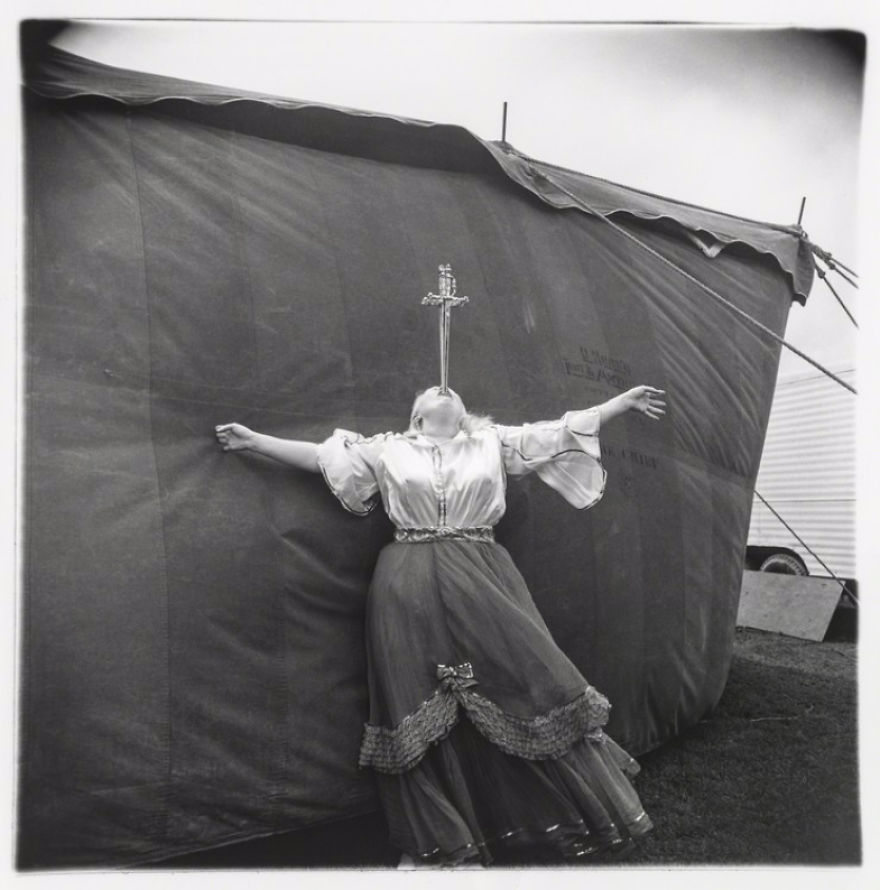Diane Arbus is the author of the best selling photography monograph in history, her photography career focused heavily on the marginalized of the era, people that were looked upon by the general populace as ugly or surreal.
Her subjects ranged from nudists, to circus performers, transgender people, dwarfs and giants.
Diane Arbus was born in 1923 in New York City. She had an interest in photography, but didn’t begin to act on it until 1941. This was when she and her husband visited Alfred Stieglitz’s gallery and learned of a few other notable photographers of the time. In 1946 the two of them opened a commercial photography business together and shot fashion for Glamour, Seventeen, and Vogue magazines among others. But apparently they both hated fashion photography and their work was seen as pretty average.
In 1956 Arbus began to develop the style she is known for, shooting subjects on the fringe of society. She saw the camera as a way of revealing truth and flaws that people may try to cover up. Her process relied heavily on forming personal connections with the people she photographed. Some critics have questioned her work’s classification as art, saying there’s no beauty in it.
More info: Facebook
Diane Arbus in 1949
While professionally continuing to thrive in to the late 1960s, Arbus had some personal challenges. Her marriage to Allan Arbus ended in 1969, and she later struggled with depression. She committed suicide in her New York City apartment on July 26, 1971.
Source: en.wikipedia.org
Child With Hand Grenade In Central Park – 1962
By the mid 1960s, Diane Arbus had become a well established photographer, participating in shows at the Museum of Modern Art in New York City, among other places. She was known for going to great lengths to get the shots she wanted. She became friends with many other famous photographers, including Richard Avedon and Walker Evans.
Source: en.wikipedia.org
The Albino Sword Swallower – 1970
In 1941, she married Allan Arbus, an American actor who fostered her artistic talent by teaching her photography.
Source: www.artsy.net
West 20th Street, N.Y. – 1966
During her wanderings around New York City, Arbus began to pursue taking photographs of people she found. She visited hotels, public parks, morgues and other various locales. These unusual images had a raw quality, and several of them found their way into the July 1960 issue of Esquire magazine.
Source: newhousempd300.files.wordpress.com
The Twins – 1967
‘Identical Twins’ depicts two young twin sisters, Cathleen and Colleen Wade, standing side by side.
The twins were seven years old when Arbus spotted them at a Christmas party for twins and triplets. The photo has also inspired other art. Most notably, it is said to be echoed in Stanley Kubrick’s famous 1980 surrealist horror film The Shining, which features sisters in similar dress and pose.
Source: en.wikipedia.org
This is an 8x speed colorization of Diane’s film test portrait.
Source: www.facebook.com
370views
Share on Facebook
 Dark Mode
Dark Mode 

 No fees, cancel anytime
No fees, cancel anytime 

































5
0